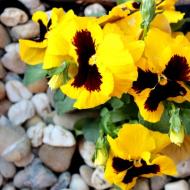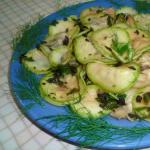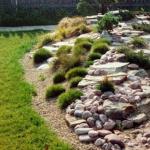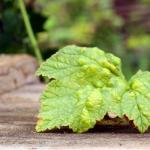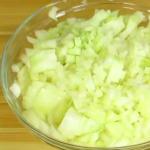
Garden pests living in the ground photo
There are many methods of dealing with the wireworm, as well as means against it. When choosing the optimal one, one must proceed from specific conditions. Some can immediately help if the land in your area is not very infected with this pest. But get ready for a long fight. Get rid of the wireworm immediately will not work. To understand the mechanism of crop protection from a pest, it is necessary to understand its way of life. I'll try to explain how I understand it.
In fact, the wireworm is called the larva of the click beetle. The beetle itself is gray or dark gray, with dark longitudinal stripes. Body length - 12-15 mm. They called him a nutcracker because, when he is lying on his back, he turns over and makes a sound similar to a click. In Ukrainian, such beetles are called kovaliks, and their larvae are called darters.
The female lays in March-June (in the Kuban) or in May-July (central Russia) from 60 to 200 eggs. A larva develops from an egg - this is a wireworm. In the garden where this pest settled, it is impossible to get a good harvest of potatoes, carrots, beets, and sometimes any crop at all, so the only way to protect it is to get rid of it as soon as possible. How? This is our conversation with you.
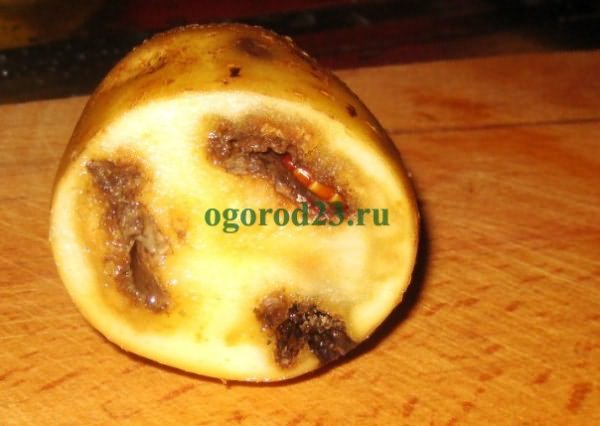
Wireworm in a potato tuber
The wireworm lives in the ground, damages stolons, roots, base of stems, especially potato tubers. The larvae of click beetles bite into the tuber, make holes in it. In other crops, they drill holes into the underground part of the stem, and may even destroy seeds before germination. For example, in corn, the wireworm bores through the seeds, making it impossible for them to germinate. This pest has a yellowish or yellow-brown very hard cylindrical body 15 - 25 mm long, 1 - 2 mm in diameter. The wireworm has a flat head, three pairs of legs of the same size. You can't crush it, you can only break it with your fingers. That is, it will not be possible to get rid of it by mechanical means, or it will be quite difficult to do so.
Adult individuals - click beetles live no more than a year. The larva - the wireworm can live 2-5 years in the soil, feeding on the roots of weeds, grass and other crops. They bring the most harm in the 4-5th year of life - it is difficult to get rid of them. Larvae of 1-2 years of life damage plants weakly, as they are small in size.
In the spring, when the weather finally sets in with positive temperatures, the wireworms gradually begin to rise to the surface of the earth to find food. This feature must be used to completely get rid of them.
The physical feature of the pest is that it migrates well in the vertical direction, and weakly in the horizontal direction. So, if it can move up and down at a distance of 1-2 m, then left and right - only 15-18 cm. Therefore, in the spring, with a liquid dressing agent (for example, Prestige), only the wireworm that falls directly inside the pickled potato can be destroyed. And if he rises up, being 20-25 cm from the tuber, then he will not try the poison - he will remain alive. This feature of the pest's lifestyle should also be used to get rid of it.
In the process of life, the wireworm periodically rises to the surface, looking for food for itself, then again goes underground. There may be several such waves. Usually there are two main waves of raising the pest closer to the surface of the earth for food: spring and in late summer-early autumn (in the Kuban this is July-August).
If the soil is dry on top, the pest goes to a depth - then it is less dangerous, but if the soil is wet, then it rises higher, thereby causing severe damage to the crop. Damage from larvae increases both in spring and autumn. If you notice wilted potato bushes among healthy bushes, then most likely it was not without a wireworm. Any protective measures must be taken immediately to get rid of this pest in order to save at least part of the crop.
After wandering through the pages of the Internet, I found out that wireworms like both wet and acidic soils, thickened plantings, weeds of wheatgrass, sow thistle, hogweed, as well as euphorbia, dodder, wood lice. They do not like soil fertilized with nitrogen fertilizers. The acidity of the soil can be reduced by sowing beans - this deprives the wireworm of a comfortable habitat. Do not forget about this feature, it can tell you how, by what specific measures you can get rid of this pest.
In 2011, the potatoes I dug out were damaged by wireworms - this is about 15-20% of the crop. I had to do something, so before planting in 2012, I processed the tubers with Prestige. The instructions for the preparation say that it protects the potato crop from both the Colorado potato beetle and the wireworm.
I must say that Prestige "works" in seed tubers, potato stalks up to 60 days. Until the end of this period, it is not recommended to eat potatoes. For the same reason, it is not recommended to treat tubers of early potato varieties with Prestige.
How well Prestige protects the crop from the Colorado potato beetle was noticeable after the potatoes sprouted. As soon as the young leaves crawled out of the ground: dead adults lay in large numbers around them. After 60 days, I was happy. I dug up a young potato - there were no tubers damaged by a wireworm. But some time later, when weeding and hilling, I saw click beetles crawling out to the surface of the earth. My fears were confirmed in mid-July, it was then that potatoes were dug up for storage in the Kuban - the percentage of the crop damaged by the wireworm practically did not decrease. Therefore, Prestige will not help get rid of the second wave of the wireworm.
That is, in the middle of summer, the liquid disinfectant no longer works. Here the question arises, how, what plant protection products (CPP) can be used to get rid of the wireworm.
In this year, 2013, I sowed beans in each hole along with a potato tuber: the click beetle does not like beans, it goes to where they are not. But since I did not have many bean seeds, I did not sow them in every hole, but about 30%. Potatoes rose, the tops grew quickly. But the click beetles have not disappeared. How to get rid of them? I made traps for them: I put slightly crushed potato leaves at the bottom of cans. I pierced the jars from the sides with a nail - I made holes. The click beetle will climb into the trap from above, and the wireworm will crawl through the holes in the jar. The traps were set up in the potato patch in the morning. I tried to choose a day without rain. In the evening I examined the banks - I found a number of click beetles and Colorado beetles. There was no conductor. I assume that the pests gathered at the smell of the leaves - they did not want to give up their usual food. After 2-3 days I examined new traps - I practically did not find click beetles, mostly there were only Colorado beetles. In some jars, in addition to the leaves, I put slices of chopped potatoes and carrots. Here in these banks I found several wireworms. Few, but they were.
There were a few of them at the end of May-June (the second wave). But I again placed jars of bait all over the potato field and collected the click beetles that got there - there were a few yellow worms. That is, I came to the conclusion that this method can be used as a good way to get rid of the wireworm, but it is quite laborious.
This was the result of my pest control. I didn’t completely free my garden from the wireworm, but there were much fewer damaged potatoes than last year.
But experienced potato growers shared with me such methods of dealing with the yellow pest.
1 way. Peel the potato, string it on a stick, bury it to a depth of 5-6 cm. After 3-4 days, dig out the potatoes, and destroy the wireworms that have stuck to it, pour boiling water over it or burn it, dousing it with kerosene.
2 way. When planting potatoes, pour into the wells 5-10 g of finely ground eggshells, lightly moistened with sunflower oil. As soon as the wireworm tries such a treat, it dies almost immediately. By the way, according to reviews, this method works well against the bear.
3 way. Two weeks before planting potatoes, sow swollen corn grains: per 1 sq. m - 2-3 nests of 15 grains each. As soon as the corn hatches, dig it up with the earth, put it on a film or plywood, select the larvae and burn them. Below you can watch a video on how to get rid of a wireworm using a sprouted corn trap:
4 way. Add ammonium sulfate to the soil - 2 tbsp. l. per 1 sq. m. This fertilizer destroys the larvae, fertilizes the soil with nitrogen.
5 way. Spread a thin layer of granulated superphosphate on an oilcloth. Moisten it with a water-acetone solution (80 ml of water + 200 ml of acetone) of any of the pesticides: actellik - 15 ml, decis extra - 4 ml, karate - 1 ml. Dry wet superphosphate in the shade and scatter over the area (5 kg per 100 sq. M). Try to immediately dig the site. You can also, when planting potatoes, throw a pinch of superphosphate processed in this way into each hole.
6 way. Carefully dig and lime the soil. Weed out wheatgrass, sow thistle - a pest settles in their roots. In each hole, planting potatoes, put a handful of onion peels. Plant marigolds around the perimeter of the potato plot, as well as between the rows.
7 way. You can completely get rid of the wireworm with the help of a predatory nematode nemabact. This is a microscopic worm that is contained in the "Protection" soil. When planting potatoes, it is enough to add a pinch of this soil to each hole. Even once is enough - the nematode will eat 60-100% of the wireworm. This soil is safe for both humans and the environment.
8 way. On one of the forums I read about this method: dig ordinary pine or spruce needles on the site - get rid of the bear too.
9 way. Wireworms like to gather under heaps of straw, tops or manure, so in the fall it can all be laid out around the site, and as soon as frost sets in, collect and burn. In the spring, you can also decompose heaps, and after a while burn them. This procedure can be repeated in the summer more than once.
10 way. This method will also help you get rid of click beetles. Beetles are very fond of sweets. Lay on the surface of the earth, for example, a film, oilcloth. Drizzle it with sugar syrup. Of course, not only click beetles, but also other "lovers" will flock to the smell of sweets. However, by doing this a few times, you can kill a lot of pests, including click beetles.
11 way. Siderats will help. Sow the pest-infested field with mustard, buckwheat, alfalfa, clover. The wireworm does not tolerate these plants. He will die or leave your site.
That's all I managed to figure out how to protect potatoes from wireworm, how to get rid of it.
Do you know any other ways? Please write in the comments.
◊◊◊◊◊◊◊◊◊◊◊◊◊◊◊◊◊◊◊◊◊◊◊◊◊◊◊◊◊◊◊◊◊◊◊◊◊◊◊◊◊◊◊◊◊◊◊◊◊◊◊◊◊◊◊◊◊◊◊◊◊◊◊◊◊◊◊◊◊◊◊◊◊◊◊◊◊◊◊◊◊◊◊◊◊◊◊◊
garden23.ru
Leaves and shoots suffer from aphid bites. Insects suck out the juice, after a while the leaves shrivel, the plant begins to wither and get sick. Black sooty dew can settle in the affected areas, the plant becomes infected with viral diseases.
A sticky sugary liquid (honeydew or honeydew) is released from the body of the aphid, enveloping the leaves. The access of oxygen to the tissues of the plant is blocked, fungal diseases develop under honeydew. Plants on which aphids have settled lose their vitality.
Black aphid prefers legumes, peach aphid - settles on all plants, melons destroy pumpkin crops. Green aphids have chosen trees and shrubs, roses and chrysanthemums. Many summer residents plant flowers to decorate the site, and aphids can freely move to vegetable crops.
Fighting methods
- place a few pots of wood shavings in the garden. An earwig will quickly settle there, destroying the pest;
- plant umbrella crops on the site: carrots, dill, parsley, fennel. They are inhabited by hoverflies - natural enemies of aphids;
- the smell of lavender and thyme will scare away insects;
- The worst enemy of aphids is the ladybug. Find these insects in the garden and place on plants affected by aphids;
- place bird feeders and birdhouses on the trees. Aphids for birds - the first delicacy;
- spray the plants with a decoction of tobacco dust, alder cones, tansy, bitter wormwood;
- chemical preparations have proven themselves well: Fitoverm, Iskra M, Agravertin.
Colorado beetle
"Dangerous", "tenacious", "ubiquitous". This characteristic deserved this pest, annoying the owners. How to deal with the Colorado potato beetle? This question has been tormenting gardeners for more than a year.
The Colorado potato beetle is a small insect with a characteristic striped coloration of the elytra. Body length - from 9 to 12 mm, width - from 6 to 7 mm. The larvae are dark brown with a color transition to yellow-orange or bright orange.
Adults overwinter in the soil. If mating took place in the autumn, the female, which came to the surface in the spring, is ready to lay eggs.
The Colorado potato beetle lives on nightshade crops. Feeds on leaves. The species is distributed in America and Eurasia. Without taking into account diapauses (winter dormancy), life expectancy is up to three years.
The beetle is most active in spring and summer. Tolerates cold well.
Fighting methods
- manual collection of larvae and adults. The method takes a lot of time, but is quite effective;
- planting between rows of nightshade crops of plants that repel striped pests. The beetle does not tolerate the smell of garlic, onions, tansy;
- pesticide treatment. Effective: Karate, Tantrek, FAS, Intra-vir.
Medvedka
The fact that this dangerous pest will settle on the site, the owners will find out quickly enough. Numerous holes on the surface signal: it's time to act.
The danger of the bear is that underground passages can stretch for tens of meters. Along the way, the insect gnaws on roots, potatoes, and seeds. In a short period, the bear is capable of causing serious damage to the crop.
The look of the pest is frightening:
- brown body up to 5 cm in length;
- massive abdomen with two processes up to 1 cm;
- twisted limbs;
- hard shell.
Medvedka causes the greatest harm to the roots of eggplant, pepper, cabbage, and tomatoes.
Medvedka hibernates underground, at a depth of 50–100 m. It also mates in underground passages. One female can lay up to four hundred eggs. The period of activity begins in spring, when the air warms up to +12 °C +15 °C. The insect digs passages mainly in the evening.
Fighting methods
- poison bait made from steamed wheat and zinc, a mixture of bran (1 kg) and Parisian greens. Baits are dug underground (up to three centimeters) - at such a depth the insect digs passages;
- next to the surface, bury the crushed eggshell mixed with vegetable oil. Medvedka will die after tasting the shell;
- you can catch a pest in a trap. Place a liter jar in the ground, pour some fresh beer. The neck is at ground level. Medvedka, attracted by the intoxicating aroma, will fall into a jar in the evening and will not be able to get out on her own;
- powder and laundry soap is detrimental to the insect. You can get rid of the pest by pouring a solution of washing powder into the holes (4 tablespoons per 10 liters of water). Insects die or come to the surface where they are easy to collect;
- the pest does not tolerate the smell of rotten fish and needles. Before planting, place pieces of cheap fish in each hole with a vegetable crop. Spread fir branches or pine needles between rows of potatoes;
- use effective chemicals: "Prestige 290 FS", "Phenoxin Plus", "Aktara 25 WG". The granules of the drug are poured into the burrows. In a day, the bear should die. The same pesticides can be added to barley or millet porridge + a little beer. Baits are placed near the holes.
Leaf-eating caterpillars
The invasion of these voracious pests can destroy part of the crop and weaken the plants. Gardeners and gardeners of our latitudes are often annoyed by cabbage whites and turnips.
Cabbage white caterpillars appear from the larvae laid by the butterfly on the underside of the leaf. The size of the caterpillars is about 2 cm, the color is ocher. An adult caterpillar grows up to 4 cm and acquires a yellow-green color. There are black dots on the sides.
The turnip whitefish reaches a length of 2.4 cm, the color is velvety green, the body is covered with short hairs, a yellow stripe stretches along the back.
Caterpillars damage cruciferous plants. Cabbage eats cabbage leaves, turnip can damage a head of cabbage.
The period of activity is from the beginning of the appearance of young heads of cabbage until late autumn.
Pest control is hampered by their penetration into the head of cabbage.
Fighting methods
- mass colonies of leaf-eating caterpillars are destroyed with chemical preparations "Fastak", "Sherpa", "Ethnobacterin";
- at the first signs of damage, the drug "Iskra" is used;
- a month before harvesting use "Agravertin";
- effective manual collection of larvae and adults, digging a summer cottage;
- Grind 4 kg of celandine, pour hot water, insist. Spray cabbage;
- dissolve 50 g of mustard powder in a bucket of boiling water. Leave for 48 hours, cut 40 g of laundry soap, strain, spray the plants.
The summer shield is an animal that can cause significant damage to rice crops. You will find a detailed description of the species in this article.
To get rid of the odorous woodworm, you need to know all the measures to combat this insect. Read more at http://stopvreditel.ru/rastenij/selxoz/drevotochec-pahuchij.html link.
Slugs
These pests cause significant damage to large plants: they damage succulent leaves. Small plants naked slugs can destroy to the ground.
Slugs living in the garden, most often do not have a hard shell. Size - up to 1 cm, body - soft, gray-brown. On plants, pests leave a sticky layer of translucent mucus.
Slugs damage root crops, cabbage, cucumbers, strawberries.
Pests are most active at night.
Fighting methods
- the destruction of weeds will reduce the number of slugs;
- superphosphate (up to 40 g / sq. M) in granules, a mixture of tobacco dust and lime, potassium salt is scattered on the soil. Carry out processing in the evenings. The interval between the first and second phase is about 40 minutes;
- directly on the slugs, you can pour the drug "Thunderstorm" and "Meta";
- a folk method is to pour hot water over bare slugs. At a temperature of + 40 ° C, the pest dies. Cabbage does not suffer during processing. The procedure is carried out at dusk.
The use of folk methods of struggle and the use of effective pesticides will get rid of garden pests. Regularly carry out agrotechnical measures - and the number of harmful insects will significantly decrease.
stopvreditel.ru
Generally speaking, entomology does not know such a species as a garden bug. In everyday life, this name is collectively referred to as all stink bugs that live in areas planted with cultivated plants. Sometimes these insects are also called garden bugs, which are the same thing (especially since for many summer residents a garden and a vegetable garden are one common area near the house).
On ordinary summer cottages of six acres, you can meet representatives of several dozen species of these insects with a very diverse body shape and color. Moreover, the garden bug can be both a pest that damages various plants, and a very useful exterminator of other harmful insects.
The photos below show typical garden bugs - berry shield bugs. These are one of those stink bugs that leave a sugary sweet smell on their hands and which some people are afraid of for some reason:
"Terrible insects. I've been afraid of them since childhood, I'm shaking all over when I see them! Sometimes they fly right into our house, then I can’t calm down all day. When I remember that nasty smell…”
Yana, St. Petersburg
Being bright and quite beautifully colored insects, garden bugs can be of sporting interest to the amateur naturalist:
All harmful garden bugs feed on plant sap by piercing the skin of leaves or soft stems and sucking out the nourishing juices. After that, brown spots appear on the leaves, increasing in size over time. The leaves of cucumbers and cabbage after such an attack often curl and dry out.
The photo below shows a common garden bug on a cabbage leaf:
On a note
Bed bugs are the worst agricultural pests on a national scale. Yield losses from the activity of the so-called harmful turtle bug amount to thousands of tons of grain per year, and in some gardens up to a quarter of young trees die from attacks by the pear bug.
So, some garden bugs are pests. For this reason, it is useful for summer residents and gardeners to know how to get rid of them and prevent mass reproduction in the future. However, one should also be able to distinguish different types of bedbugs from each other: after all, some of them are useful predators that actively destroy aphids, thrips, caterpillars of harmful butterflies and Colorado beetle larvae. The fight against harmful garden bugs should not affect such helpers.
Harmful garden bugs
- A typical example is the green forest shield bug, known to summer residents as the green garden bug. It usually feeds on various wild and park trees and shrubs, but also readily penetrates garden plots and primarily damages raspberries. The photo shows an adult:
- Even more dangerous for the garden is the cruciferous bug, in science called northern Eurydema. This pest is similar in color to the common soldier bug, and feeds on cabbage, radish, radish, watercress and some other plants, often leading to their death;
- Pear bugs - have a very interesting appearance. They feed on apple trees, pears, quince, plums, apricots, cherries, and some others, with abundant reproduction, causing part of the foliage to fall off the trees and the fruit to die.
- The already mentioned berry shield is a pest of currants, raspberries, gooseberries, chokeberries. The photo below shows a representative of this species.
- The cucumber bug is one of the smallest. Its body length usually does not exceed 3 mm. It keeps mainly on the underside of the leaves of cucumbers, eggplants, tomatoes, sweet peppers, and therefore is hardly noticeable. Often infects greenhouses. It has a characteristic body shape and jumps well. In the photo - adult insects:
- The bug is a harmful turtle in gardens and vegetable gardens is quite rare. Its diet consists of cereals, and only sometimes this bug harms other plants. During mass reproduction, these insects can fly into areas from neighboring fields in large numbers.
- A whole family of bedbugs is a real scourge in the European part of Russia. These garden bugs can harm almost all plants, and due to their rather small size, they rarely attract attention. In the photo - a blind bug:
Can garden bugs be dangerous to humans?
Among the bugs found in gardens and orchards in Russia, there are no species that are dangerous to humans. "Domestic" herbivorous and even predatory bugs have a proboscis that is too soft, with which they simply cannot pierce human skin, that is, they cannot bite.
However, very rare cases are known when garden bugs still bite a person, but this is an exception to the rule.
As for bed bugs that feed on blood, they, of course, are not found in gardens and orchards.
On a note
Bed bugs: variety of types and colors
The stink bugs are a large family of bugs with over 4,000 species. In this family, there are species that are both harmful to horticulture and useful (predatory), so voracious that they are even bred at special stations in order to be released on agricultural land to destroy pests.
Shields are often brightly colored. For example, the photo shows an Italian bug:
And here is the red-legged shield bug, which can simultaneously harm trees and feed on other pests:
A shield boy with a very intricate color is also one of the pests:
And this photo shows an earthen shield:
Predatory bugs - assistants in the fight for the harvest
Although quite a lot of different types of predatory bugs live in our country, but in general, due to their small number, they rarely seriously affect the populations of harmful insects. Predatory bugs are often found in gardens, but they usually do not attract attention to themselves.
In the photo - ringed predator, often found near apiaries. He hunts bees, waiting for them on flowers:
From North America to Europe, the bicentennial perillus bug (Perillus bioculatus) was repeatedly imported - a stink bug that very effectively exterminates larvae and adult Colorado potato beetles:
However, in the conditions of our country, this species does not tolerate wintering and dies. Only in the Krasnodar Territory were found populations acclimatized and successfully overwintering.
Picromerus is a bug that lives in the European part of Russia and in Europe. It actively eats almost any caterpillars and larvae, including scoops, sawflies and the Colorado potato beetle:
And another species - posidus - is specially released into the fields in the spring and does not hibernate. It can sometimes be found in the garden after such a mass release:
Red bugs ordinary, or soldiers
And of course, the most famous and common type of bedbugs in gardens and vegetable gardens is the so-called soldier bug, or common red bug. Sometimes these insects can be so numerous that they begin to harm plants, although they are usually harmless to the economy.
Soldiers are found both in gardens and near outbuildings. They feed on various plant and animal foods, mainly dead insects, rotting plant debris and fruits. Only in rare cases, red bugs can suck the juices of plants, including grapes and young trees, causing them harm.
Perhaps the main feature of the bedbugs of soldiers is their coloniality. It is because of her that they are so noticeable on stumps, stones and just on the ground.
Dozens and hundreds of red insects are especially striking in early spring, when they are just starting their active life.
How to get rid of bed bugs in the garden
When meetings with harmful bugs in the garden become regular, and you notice leaves damaged by them on the plants, it's time to start the fight, not waiting for the pests to cause even more damage.
In greenhouses, the fight should begin immediately after the discovery of the first insects. This is especially true for the cucumber bug.
Methods of dealing with garden bugs are divided into chemical and agrotechnical. The former involve spraying the plants with insecticides (usually pyrethroids or organophosphorus), aiming to treat both leaf surfaces. It is recommended to use selective insecticides (for example, Aktara) - they do not have such a strong effect on beneficial bugs, but they actively destroy pests.
Agrotechnical measures to combat garden bugs are, first of all, the cleaning of fallen leaves, among which adults hibernate, plowing between rows or the entire area of the garden. If the site is small, and there are few trees and bushes on it, then it is reasonable to manually collect the leaves with the larvae deposited on them. This measure is safe for the garden and quite effective.
klop911.ru
Pests in the garden
rodents
You can fight rodents (mice, mole rats, moles) with mousetraps, boiling water, gas, hedgehogs and cats. But rodents loosen the ground and bumblebees live in their minks, and bumblebees are good pollinators. Therefore, maintain a reasonable balance in your ecosystem.
Imperial hazel grouse bulbs emit a sharp unpleasant odor that small rodents cannot tolerate. Therefore, mice bypass the areas where these plants are planted. Phytoncides of black elderberry also help in the fight against mice and rats. This plant repels moths, codling moths, moths.
So that there are no rodents in the garden, you can plant a black root on the site. He will not interfere next to fruit trees, which also suffer from rodents and hares in winter. Animals avoid ripe blackroot seeds, which are dotted with many small spines. With light contact, they attach to the coat and cause itching and redness of the skin.
In addition, rodents do not dig holes and do not nest where spurge grows. Given the high vegetative mobility of the plant and its aggressiveness, it is planted in isolation from other plants. In the case of joint planting with other plants, be sure to limit the spread of its root system. All parts of the plant are poisonous! Rodents are also repelled by air propellers, which are installed on sticks in areas.
caterpillars
Burdock infusion is used against the caterpillars of cabbage scoops, whites and moths. Burdock leaves are finely cut, stacked, slightly compacted, so that they occupy a third of the bucket. Top up the bucket to the brim with water and insist for 3 days. The infusion is used after straining. Preventive spraying of cabbage three or four times (in 6-8 days) with this infusion during the summer of butterflies completely eliminates damage to plants.
Naked slugs that eat tomato fruits and cabbage leaves are fought with the help of trapping shelters: in small areas in places where pests accumulate (in low, shady places), moistened rags, coolies, pieces of light boards or plywood, burdock or rhubarb leaves, etc. are laid out. Under these shelters, slugs gather in the daytime.
Here they are destroyed. A good way to deal with slugs is to dust the aisles twice (in 20-30 minutes) with fluffy lime mixed with superphosphate or tobacco dust in a ratio of 8-10: 2-3. This treatment is carried out in the evening, when the pest enters the plants.
Colorado beetle
You can spray potatoes from the Colorado potato beetle with infusion or decoctions of plants, such as spotted hemlock, high honeysuckle or spur, large burdock, capsicum (burning), bitter wormwood. The beetle will also not be healthy from urea solutions (100 g per bucket of water). Turkeys, bustards, guinea fowls and pheasants can eat the pest. Turkeys are taught to do this from childhood, adding a little crushed Colorado potato beetles to the feed.
Ground beetles destroy from 30 to 100% of beetle larvae. One ground beetle can eat an average of 26 larvae per day. Accordingly, the number of the beetle that leaves for the winter and attacks the potato fields in the spring of the next year decreases. In the fight against the Colorado potato beetle, ladybugs, lacewings, predatory bugs and forest ants help the beetles. Calendula and hemp planted on the site will also repel the Colorado potato beetle.
When planting potatoes in each hole, you can add semi-rotted coniferous sawdust, chopped bark of coniferous trees or fallen needles. You can plant potatoes and beans together in the same hole. This enriches the soil with nitrogen, and the smell of the beans repels the Colorado potato beetle.
Medvedka
Bears do not like the smell of calendula, garlic, parsley, fresh alder leaves. In minks, you can pour a solution of 1 tablespoon of kerosene or 2 tablespoons of washing powder per 10 liters of water. Medvedka will crawl out of the mink in 1-2 minutes.
You can arrange a trap from a tin box 10x30x15 cm, dug into the ground so that the upper edge is level with the upper soil horizon. The box should be covered with a large mesh of wire, perforated rag, gauze or other similar material and sprinkled with earth.
A thin layer of earth or humus is placed at the bottom of the box and moistened. As a trap, you can use a glass jar, greased from the inside at the neck with honey. The jar is dug into the ground, the neck is closed with a board with a gap of 1-1.5 cm. After a while, the trap is taken out and the insects that have crawled into it are destroyed.
Ants
Red and small forest ants destroy pests. But herbivorous ants (brown, soddy, red-cheeked, ordinary garden, etc.) damage carrots, beets, potatoes, cabbage and other plants, gnaw holes in wood, feed on sweets, fruits, and meat in houses.
The area where the ants settled can be sprinkled with soda or poured several times with undiluted urine. You can dig out the nest in cloudy weather or at dusk, pour the insects into a bucket and move them off the site. Dry tansy leaves are also a good way to keep ants away from your home.
Aphids and spider mites
Plants are sprayed with an infusion of potato tops: no more than 1200 g of fresh tops are crushed and poured into 10 liters of water. Then insist 2-3 hours, filter and immediately spray. 3-4 hours after treatment, aphids and spider mites die.
The same result is obtained when using a decoction of stepchildren and tomato tops: 400 g of green and finely chopped mass is poured into 10 liters of water and boiled for 30 minutes over low heat. For 2 liters of broth, take 10 liters of water, add 30 g of laundry soap or washing powder and spray the plants. The decoction destroys not only aphids and mites, but also other pests.
Effective against aphids and mites and an infusion of onion peel: half a bucket of slightly compacted peel is poured into 10 liters of water heated to 60-70 ° C and insisted for a day. Before spraying, the infusion is filtered and diluted twice with water. They also prepare an infusion of chamomile, but for spraying they take 2 liters of infusion and 30 g of washing powder for 10 liters of water.
In addition to the above means of combating aphids and mites, an extract of garlic is prepared (40-50 g of garlic is crushed, diluted and stirred in 10 liters of water), tobacco infusion (1 kg of tobacco waste is poured into 10 liters of water heated to 60-70 ° C, insisted for a day, then filtered, 2 liters of infusion is diluted in 10 liters of water, adding 20-30 g of soap or washing powder), as well as on stand yarrow harvested in early spring, infusion of horse sorrel roots and dandelion leaves. Everything is prepared in the same concentration as the tobacco infusion.
Phytophthora
Tomatoes planted among the grass are less susceptible to diseases. This is facilitated by the reaction of the soil within pH 5.0-6.5. Hemp also saves from phytophthora. Early culture allows avoiding the disease: early variety, highly fertile site of the southern slope, early planting date in combination with high-quality 60-65-day-old seedlings with opening flowers. An increase in immunity is facilitated by the local application of biohumus to the hole during planting, the use of microelements, and increased doses of phosphorus-potassium fertilizers.
Diseases caused by bacteria
Hemp has a strong disinfecting property against root cancer bacteria, which affects apple trees, pears, plums, and raspberries. In the garden, it is enough to have a few cannabis plants. She drives away strawberry fleas from turnips, radishes, repels pea aphids.
Common juniper, an excellent phytoncide, kills many pathogenic microorganisms in the atmosphere, has a pleasant aroma. In addition, wood phytoncides are all types of juniper, poplar, birch, pine, fir. Fragrant plants - wormwood, mint, dill, garlic - also contribute to the improvement of the garden.






